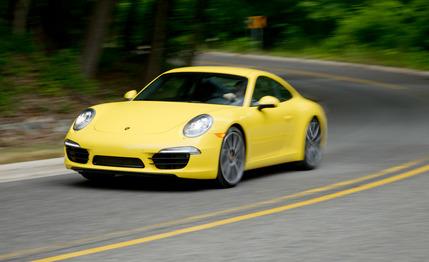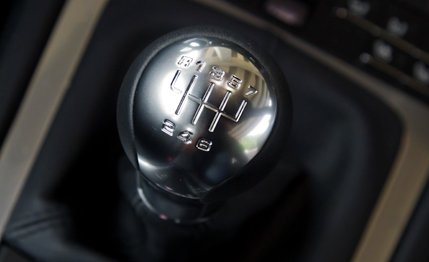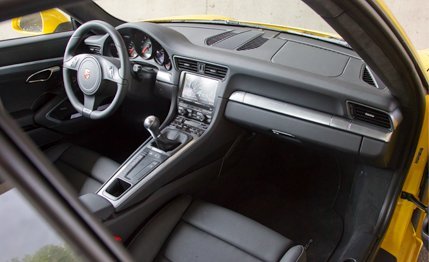
 Instrumented Test
Instrumented Test


We thought it was a typo when we first saw it in a report from our German correspondent more than a year ago. But he was accurate, as is his way: The Porsche 911 would be, and now is, offered with a seven-speed manual transmission. Seven speeds! A veritable embarrassment of forward gears! So many gears, in fact, that Porsche put an indicator in the tachometer so you don’t get lost.


Porsche and supplier ZF have accomplished what no other car company has, which is sharing the basic structure of its manual and dual-clutch automatic trannies: The two boxes share about a third of their parts. Beyond the benefits of commonality, the benefit to Porsche and to 911 buyers is improved fuel economy. At 19 mpg city and 27 highway, the new 3.4-liter Carrera gets 1-and 2-mpg bumps (city and highway, respectively) compared with last year’s 3.6-liter Carrera equipped with a six-speed manual.


So, for those times when you would like to drive your Porsche not at all like a Porsche—just locked in overdrive and trundling along on the highway—you will get better fuel economy. In seventh gear, with the shift lever listing heavily to the right, the Carrera feels sedated. To keep on top of the ebb and flow of highway traffic, we typically left the car in sixth, the gear in which it reaches its 182-mph top speed.
That’s the thing about the new 911: It is a two-mode car. Porsche, like all automakers, has to be evermore mindful of fuel economy, hence the seventh gear, the standard stop-start system, the electrically assisted steering, and the greater use of aluminum body panels. Turn off the stop-start system and avoid seventh gear, and what you’ll give up in efficiency you will surely gain back in joy.
True, the electric steering filters away some of the feel of earlier 911 helms, but it also eliminates occasionally extraneous pavement feedback. Pile on some revs, and that characteristic hard-shelled thrum of the 350-hp flat-six still thrills. And the grip is just tremendous. The new car hangs on the skidpad more tenaciously, stops shorter from 70 mph, and gives up only a tenth of a second in 0-to-60 and quarter-mile times to the 408-hp 2011 Carrera GTS with its bigger engine.


There is still the matter of a little thing called the Boxster S, however. Porsche has always been careful to prevent it from out-performing its bigger brother. With 2013 versions of the Boxster S and the base 911, the accelerative gap between the two is now exactly zero. And we mean exactly zero.
The 911 Carrera coupe, with the seven-speed manual, runs to 60 mph in 4.4 seconds. The Boxster S, powered by a 315-hp version of the same 3.4-liter engine, ran it in 4.4 seconds. More remarkable, they both clock 12.9 seconds at 111 mph through the quarter-mile. Even up to 150 mph, the 911 pulls ahead of its little brother by only 1.2 seconds.
But the Boxster S has a paltry six speeds in its manual gearbox.